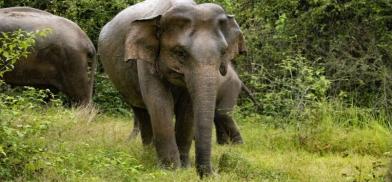Growing human-elephant conflict in Sri Lanka worries government, animal lovers
Sri Lanka is often seen as an elephant country and is home to over 5000 elephants

Sri Lanka is often seen as an elephant country and is home to over 5000 elephants. The Sri Lankan elephant is one of three recognized subspecies of the Asian elephant and is of great cultural, economic and tourism importance in the island nation.
But, in the last few years, it is also seeing mounting incidents of human-elephant conflict, registering record casualties of both. In 2019, around 407 elephants were killed and 318 the following year.
Dr. Prithiviraj Fernando, an elephant expert in the island nation and the head of the Centre for Conservation and Research (CCR), has suggested erecting fences around vulnerable villages in the country and freeing forests of any physical disruptions.
Tissa Vitharanna, a Sri Lankan MP, called the new approach more sensible and asked the parliament to consider it, according to a report in Economy Next.
The approach suggested by Fernando has been successfully tested in several villages.
“I went there and saw what had happened. I spoke to the villagers. They said there is no conflict there anymore but instead a friendship has developed between the humans and elephants,” Tissa was quoted as saying by The Economy Next.
Over the years, the cost of the measures taken to address the issue has gone up substantially, he said. However, these measures proved meaningless as the conflict has only gone up.
“Obviously the policy was wrong because the policy was to herd the elephants into a restricted forest area,” he argued. Experts around the world, too, call it a failed approach. Over the period, they say that elephants learn to break through these barriers when they encounter them regularly.
In 2019, Sri Lankan President Gotabaya Rajapaksa had given an ultimatum to his officials to bring down these numbers.
It was also noted that only female elephants and baby elephants were getting into villages, said Vitahrana, suggesting that the animals might be starving and dying in the forests when food is scarce.
Sri Lanka spent around $2 million in erecting electric fences of 4,756 km in 2019-20, according to an audit ordered by a parliament committee. However, there is little hope these measures would be long-lasting.
(SAM)









Post a Comment